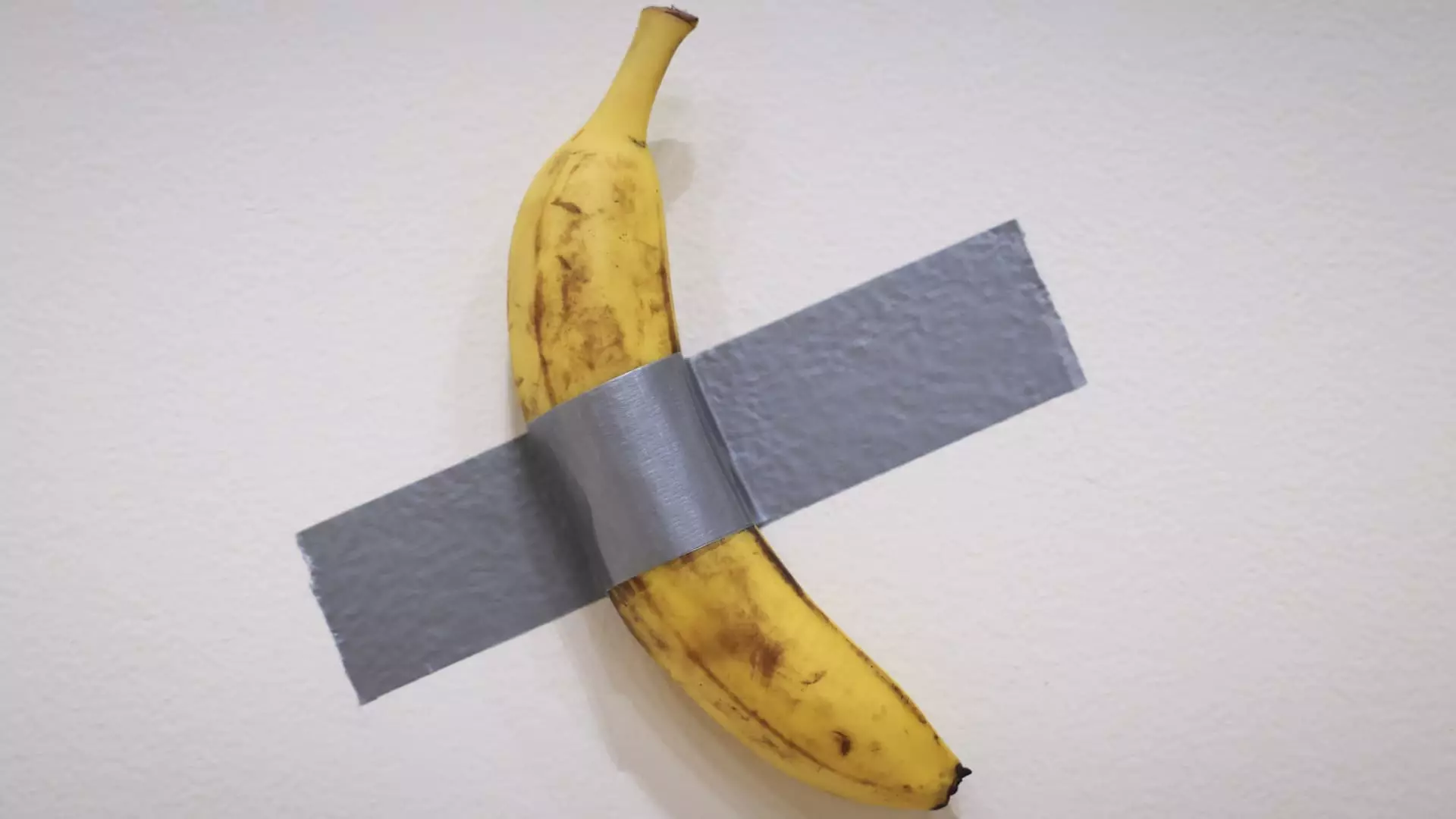In a remarkable demonstration of how contemporary art and digital assets have converged, crypto investor Justin Sun’s $6.2 million purchase of a banana duct-taped to a wall has captured global attention. This eccentric piece, titled “Comedian,” was created by Italian artist Maurizio Cattelan and has become emblematic of both viral culture and the rising influence of cryptocurrency within the art market. Sun’s acquisition at a recent Sotheby’s auction not only rekindles debates about art valuation but also highlights the growing synergy between traditional and digital investment landscapes.
The auction took place amid an atmosphere charged with excitement, fueled by the participation of keen bidders who recognized the immense cultural significance of the artwork. Sun, who emerged victorious after competing against six other bidders, expressed profound enthusiasm for the piece, stating, “This is not just an artwork. It represents a cultural phenomenon that bridges the worlds of art, memes, and the cryptocurrency community.” This statement reveals a deeper underlying narrative: art is no longer just about aesthetics but has transformed into a conduit through which social commentary and technological evolution can be explored.
The initial debut of “Comedian” at Art Basel Miami Beach in 2019, where it was initially priced at $120,000, marked its introduction into the mainstream art scene. Its viral ascent — amplified by social media shares and public curiosity — demonstrated a shift in the art paradigm where capitalization on unique and sometimes absurd concepts can yield astronomical values.
Intriguingly, the banana artwork’s authenticity lies not in the perishable banana itself, but rather in the certificate of authenticity and the accompanying installation guidelines. This fact has led many within the cryptocurrency community to draw parallels to Non-Fungible Tokens (NFTs), a digital asset class that similarly derives its value from the proof of ownership rather than the object itself. Sun’s intent to consume the banana as part of the artistic experience adds a layer of meta-commentary, suggesting that value is not solely a product of physical possession but can also be a lived experience.
In this light, the transaction reflects a radical transformation in how we perceive value within an artistic context: many contemporary artworks are increasingly viewed as investments rather than mere decorative objects. This commodification raises poignant queries about the criteria for defining art in an age rife with digital innovation and meme culture.
Sun’s extravagant purchase is situated within a larger context of a resurgent art market, which has had a rocky trajectory over the past two years. The recent auction week saw Sotheby’s and Christie’s each achieving remarkable sales, signaling a renewed confidence among collectors. For instance, Sotheby’s sold a Monet for $65.5 million and Christie’s a Magritte for $121 million. Such numbers illustrate that, despite economic uncertainties, art retains its allure as a valuable asset class, particularly among high-net-worth investors who seek not only aesthetic fulfillment but also status and financial growth.
Recent data suggests that affluent individuals are increasingly drawn to both traditional art forms and unconventional pieces that challenge conventional norms. The intersectionality of art, technology, and social culture fosters a unique environment where artworks can serve as speculative investments but also as platforms for critiquing societal trends.
The sale of “Comedian” serves as a prominent case study in the evolving dynamics of the art world. It challenges us to reconsider our definitions of value, ownership, and even artistic legitimacy. As contemporary artists like Cattelan continuously push boundaries, and as collectors like Sun embrace the interplay between the tangible and the digital, a new realm of artistic expression and investment is being forged. The dialogue ignited by such transactions will undoubtedly persist, pressing us to redefine our understanding of art in an increasingly complex cultural landscape. As the blend of art, memes, and technology continues to shape the future, we may find ourselves in a period where the conversation surrounding art has broader implications than we can currently foresee.

